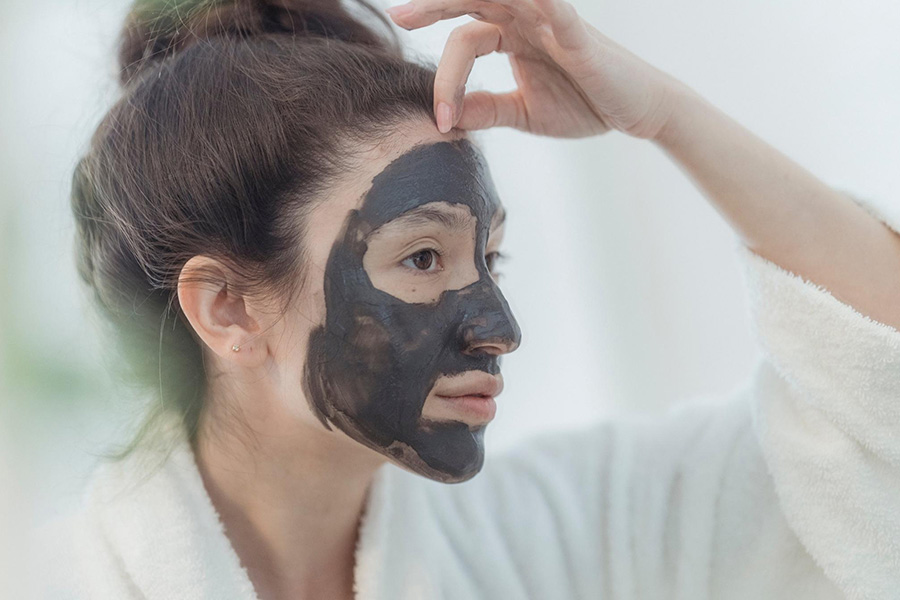Sea moss has gained attention in the beauty market as an ingredient with tremendous value in many beauty products. But sea moss is only one of many sea ingredients used in beauty products, other important ingredients include sea salt and sea clay.
One of the main reasons sea ingredients are taking over the beauty market is consumers prioritize products made with natural, organic, plant-based ingredients. In this article, we will discuss the value of sea moss and other sea ingredients and how they will impact the future of the beauty market.
Table of Contents
What is sea moss
Sea moss beauty trends
Why use seas moss in beauty products
Ethically sourcing sea moss
The future of sea ingredients and beauty
What is sea moss
Sea moss is a generalized term used to describe the thousands of species of red algae and seaweeds that grow in many parts of the world. The species and varieties vary from region to region and offer similar but not identical benefits.
The most commonly used sea moss is Chondrus crispus, also known as Irish moss, that’s found in colder climates along rocky coastal regions in the North Atlantic.
Eucheuma cottonii and Gracilaria are sea mosses that are found in tropical climates along the coastlines of South America, Africa and some Asian regions.
Seaweed is also considered an algae and can also be included in the category of sea moss. There are already so many amazing seaweed products on the market, like seaweed shampoo and seaweed face cleanser.
When using sea moss, it’s important to clearly communicate which species is being used and how they align with the product’s intended function.
Sea moss and sea ingredients beauty trends
Sea moss has seen a consistent rise in search trends since 2021 and has become popular in recent months as it’s gained prominence on social media. The global market for algae products is expected to grow at a compound annual growth rate (CAGR) of 7.3% between 2022–2029 to reach US $305.3 million by 2029.
Celebrities such as Kim Kardashian have boosted sea moss’s popularity which started as an edible health booster in green smoothies and supplements. Now, videos on TikTok under the hashtag #SeaMoss have also begun discussing its beauty benefits.
The sea moss market in beauty and wellness is currently dominated by independent sellers who promote locally and authentically sourced products.
Other sea ingredients are also seeing continued growth in the beauty market. The bath salt market is projected to reach US $3.8 Billion by 2030 and the market for beauty facial masks is expected to exceed US $14 billion by registering a CAGR of 8% between now and 2031, particularly as sea mud masks take over as a more natural type of mask for multiple different skin types.
Why use sea moss in beauty products
Sea mosses contain over 90% of the minerals in the human body and are rich in fatty acids, amino acids, antioxidants and several vitamins. Studies have shown that sea moss supports our overall health and wellness, including immune function and gut health.
But why use sea moss in beauty products?
Due to its nutrient profile, reported skincare benefits of sea moss include boosting hydration, anti-inflammatory, antioxidant and antimicrobial properties, protecting the skin barrier, and balancing oil production. However, more research is necessary to fully understand the beauty benefits of sea moss.
Ethically sourcing sea moss
Sea moss has a long history of being used as a traditional holistic remedy that’s rooted in local cultural practices.
In Ireland and the Caribbean, sea moss has been used for centuries as a herbal medicine for ailments and to boost fertility. During the potato famine in the 1800s, sea moss was made into a drink to combat nutritional deficiencies and is still used to boost health in Ireland today.
Sourcing sea moss for beauty products should be done with respect to and in partnership with local communities to establish a connection with nature, culture, and tradition. One way to do this is to advocate for local sourcing and ensure that sea moss is harvested sustainably to ensure regeneration and avoid over-farming and damaging natural habitats.
Sustainable sourcing options for sea moss
Sea moss is farmed and harvested through various means, and with each method, it’s important to consider sustainability.
Wildcrafted sea moss grows naturally and is taken directly from the sea. While this is claimed to yield the most nutritional benefits, there is the potential issue of overfarming and disrupting the natural ecosystem. Sea moss harvested from the sea should be regulated and done in conjunction with locals who are knowledgeable about sustainable methods and the delicate ecosystem.
Sea farms producing ocean-farmed sea moss grow good quality moss and provide vital jobs and support local industries, particularly where fishing is prohibited. However, as sea moss cultivation grows, the amount of seabed dedicated to farming could cause other future issues.
Ocean-grown moss that is harvested or farmed is also susceptible to pollution and heavy metals, so it’s essential to keep organic sourcing in mind to ensure safety.
Two alternatives to ocean-grown moss include man made pool farms and bio-alternatives such as lab-grown algae.
- Man Made pool farms can develop sea moss quickly and in a manner that doesn’t disrupt the oceans; however, it’s a lower quality product that contains more mucilages (which changes the composition of the sea moss).
- Lab-grown algae is already a reality and can allow for larger-scale production. Companies should use naturally sourced ingredients to grow their algae.
Another thing to remember when thinking about ethically sourcing sea moss is manufacturing: wherever possible, keep production and manufacturing within the local community.
Brands should be transparent about sourcing sea moss as part of the product storytelling to promote the cultural history of the ingredient and the local farmers.

The future of sea ingredients and beauty
Although sea moss has been used for many years, it has recently gained popularity as consumers seek more sustainable plant-based products. With its anti-inflammatory and antimicrobial properties, sea moss is perfect for bath and body care. Additionally, due to its high mineral and vitamin content, sea moss can protect against hair loss and encourage healthy hair that’s strong and hydrated.
But what products do we currently see that are dominating the market with the use of sea ingredients? Sea Clay Mud masks, seaweed shampoo, seaweed face cleanser, and sea salt scrubs are leading the beauty market as products that contain natural sea ingredients.
Conclusion
Beauty products made with natural, organic, plant-based ingredients will continue to be consumers’ priority as they aim to live more eco-friendly and sustainable lifestyles. To be competitive, brands must incorporate products that align with their consumers’ shifting preferences and buying patterns.
This would mean adopting natural plant-based products made with sea ingredients like sea moss and sea clay. By capitalizing on these trends, brands can ensure they’re well set up for the future!




